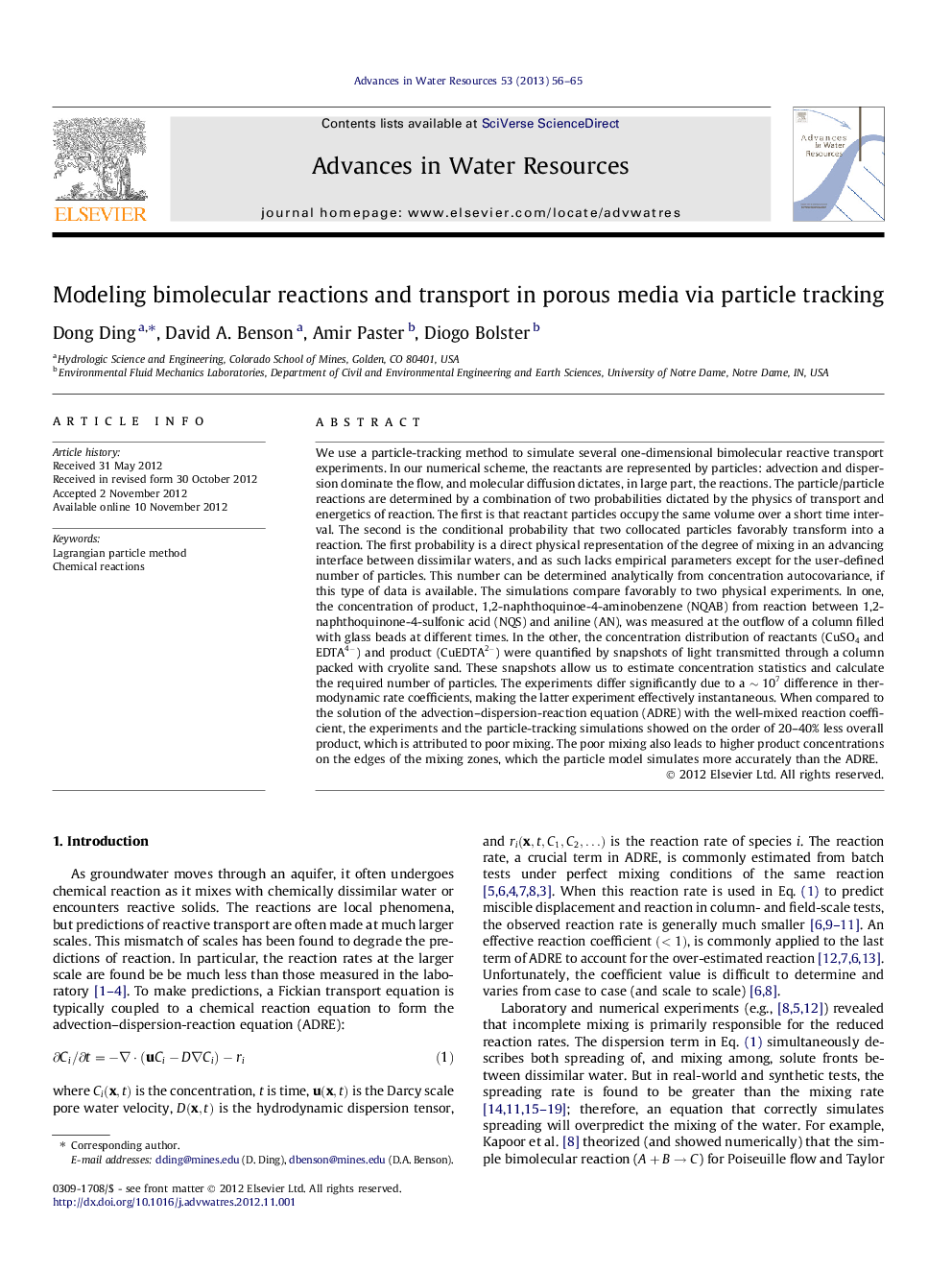| کد مقاله | کد نشریه | سال انتشار | مقاله انگلیسی | نسخه تمام متن |
|---|---|---|---|---|
| 4525762 | 1625655 | 2013 | 10 صفحه PDF | دانلود رایگان |

We use a particle-tracking method to simulate several one-dimensional bimolecular reactive transport experiments. In our numerical scheme, the reactants are represented by particles: advection and dispersion dominate the flow, and molecular diffusion dictates, in large part, the reactions. The particle/particle reactions are determined by a combination of two probabilities dictated by the physics of transport and energetics of reaction. The first is that reactant particles occupy the same volume over a short time interval. The second is the conditional probability that two collocated particles favorably transform into a reaction. The first probability is a direct physical representation of the degree of mixing in an advancing interface between dissimilar waters, and as such lacks empirical parameters except for the user-defined number of particles. This number can be determined analytically from concentration autocovariance, if this type of data is available. The simulations compare favorably to two physical experiments. In one, the concentration of product, 1,2-naphthoquinoe-4-aminobenzene (NQAB) from reaction between 1,2-naphthoquinone-4-sulfonic acid (NQS) and aniline (AN), was measured at the outflow of a column filled with glass beads at different times. In the other, the concentration distribution of reactants (CuSO4CuSO4 and EDTA4-EDTA4-) and product (CuEDTA2-CuEDTA2-) were quantified by snapshots of light transmitted through a column packed with cryolite sand. These snapshots allow us to estimate concentration statistics and calculate the required number of particles. The experiments differ significantly due to a ∼107∼107 difference in thermodynamic rate coefficients, making the latter experiment effectively instantaneous. When compared to the solution of the advection–dispersion-reaction equation (ADRE) with the well-mixed reaction coefficient, the experiments and the particle-tracking simulations showed on the order of 20–40% less overall product, which is attributed to poor mixing. The poor mixing also leads to higher product concentrations on the edges of the mixing zones, which the particle model simulates more accurately than the ADRE.
► Application of Lagrangian particle tracking model to reactive transport.
► No empirical parameters or assumptions in simulation.
► Accurate simulation of physical experiments on diffusion controlled, mixing-limited reaction.
Journal: Advances in Water Resources - Volume 53, March 2013, Pages 56–65